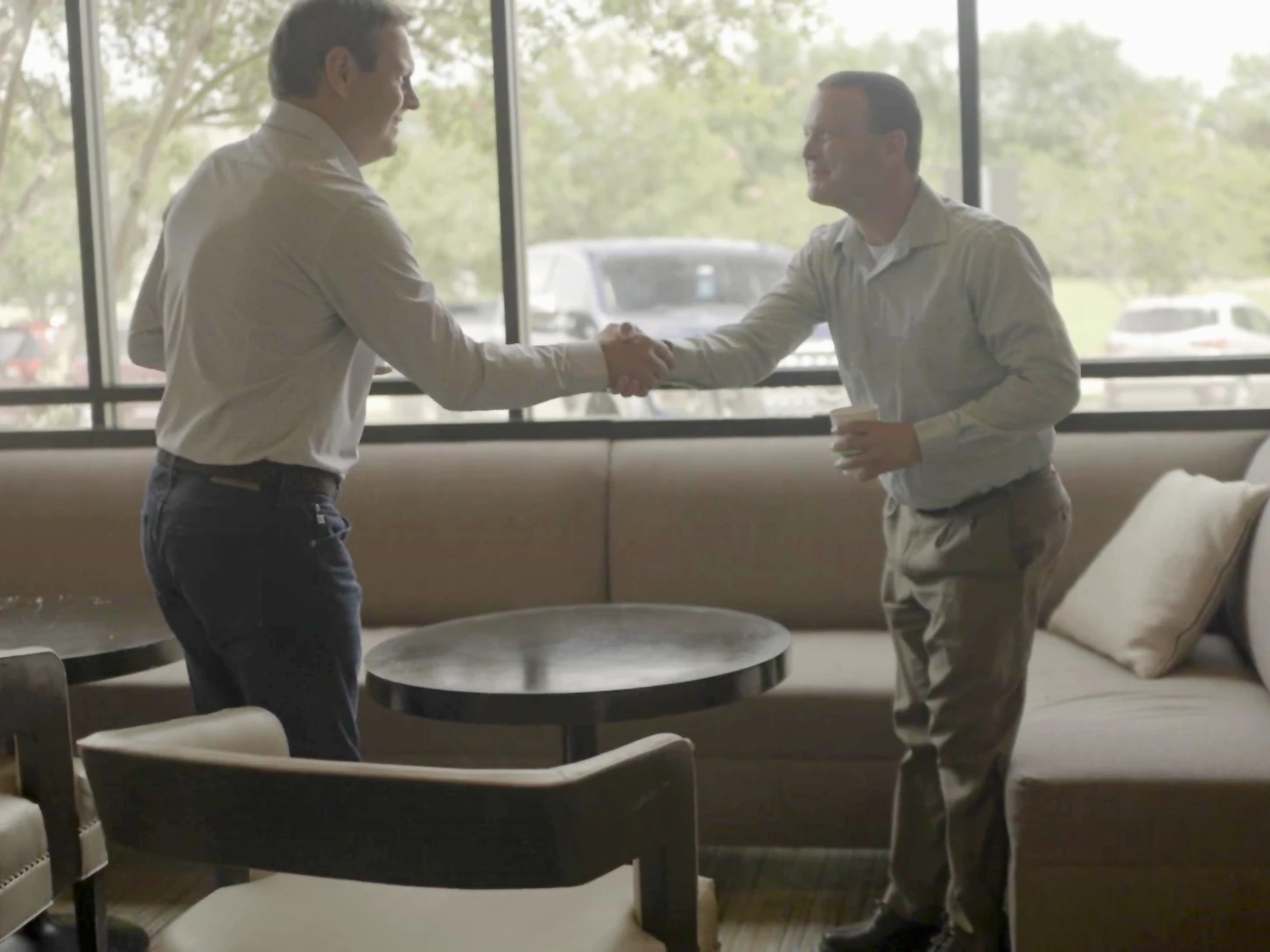Home › Asbestos Exposure › Secondary Asbestos Exposure
Secondary Asbestos Exposure and Mesothelioma
Even for those who have never directly worked with or around asbestos, mesothelioma can still develop from secondary asbestos exposure. This occurs when workers exposed to asbestos on the job bring the fibers home on their clothing, hair, skin and in their automobile. Their loved ones can then inhale or ingest the fibers. No amount of asbestos exposure is safe—secondary exposure can be just as hazardous as direct exposure and cause asbestos-related diseases like mesothelioma.
Last Updated:
- October 20, 2025
How Does Family and Secondary Asbestos Exposure Occur?
Secondary asbestos exposure occurs when an exposed worker brings asbestos home on their clothing after working at a job where asbestos products were present. As a result, a family member or person who does not work directly with asbestos is exposed to the mineral’s fibers through contact with the exposed worker or through riding in the exposed worker’s truck or car. Fibers get transferred into the carpet and fabric of the seats.
Among the most common places where asbestos can be found in exposed workers’ homes are clothing, furniture, flooring, carpets, rugs, laundry areas, and automobile interiors. Once these items become contaminated with asbestos fibers, there’s no reliable way to remove them.
A District Fire Chief's Story
"It was secondary exposure to me as I was young growing up."
My dad worked in paper mills and in plants. As soon as he came home from work, we jumped in the car and went to practice. And that’s where I would ride next to him with my arm around him in his work clothes. The exposure was from his clothes.
View Transcript
01:26
Examples of Secondary Exposure
The following are some common scenarios involving secondary asbestos exposure:

A son jumps into the arms of a father who returns home from working at a chemical plant all day. The dad is still wearing his asbestos-laden work clothes when he hugs his son, exposing the child to asbestos fibers.

After working around asbestos all day at a fertilizer plant, a dad leaves work without changing and goes straight home to pick up his daughter to take her to soccer practice. Riding together in the same car exposes the daughter to the asbestos fibers.

A wife shakes out and washes her husband’s work clothes, which are covered with invisible asbestos fibers. The asbestos-contaminated clothing is then mixed in with other clothing.

A father comes home from work daily and rests on the family sofa before dinner, still wearing work clothing covered in asbestos. The family regularly spends time on this sofa, which is now covered in invisible asbestos fibers.
Who Is at Risk of Second-Hand Asbestos Exposure?
Families of workers who were exposed to asbestos day in and day out are the most at risk of secondary exposure—particularly wives and children. Sources of exposure can include hugging family members, handling and washing contaminated clothing, and even exposure to fibers embedded in household furniture.
Historically, women were excluded from occupations commonly associated with asbestos exposure, meaning that secondary exposure is the main cause of mesothelioma in women. A 2018 study of three women with mesothelioma from non-occupational asbestos exposure found that just living with family members who worked with asbestos and living near asbestos-containing factories and plants can cause severe mesothelioma.[1]
High-Risk Occupations: How Asbestos is Brought Home to Families
Union workers were heavily exposed to asbestos from the 1930s to the 1980s in Louisiana. Some of the most common occupations and trades that may have worked around and potentially been exposed to asbestos in the past, likely causing secondary exposure to their loved ones, include:
Did You Know?
Roughly 35% of asbestos cases involve a secondary asbestos exposure component, according to our sponsor, Baron & Budd, P.C..
What Are the Health Risks of Secondary Asbestos Exposure?
Just like individuals who experienced direct asbestos exposure, secondary asbestos exposure victims face significant health risks. Even if someone does not handle asbestos directly, simply inhaling the fibers in the area can lead to serious illnesses.
The most common asbestos-related diseases that secondhand exposure victims may develop are the following:
- Mesothelioma
- Lung cancer
- Colon cancer
- Asbestosis
The latency period for these diseases can be decades long, meaning symptoms may not appear until long after the initial exposure.
Questions About Secondhand Asbestos Exposure?
Contact us today to learn how you and your loved ones could have been affected and what steps to take next.
Compensation for Secondary Asbestos Exposure in Louisiana
If you believe you were a victim of secondary asbestos exposure and have been diagnosed with mesothelioma or another exposure-related disease, you may be entitled to compensation. Typically, Louisiana mesothelioma victims have two main compensation options: they may file suit against the companies responsible for their exposure to the asbestos products, and they may file claims for compensation with asbestos trust funds.
1) Mesothelioma Lawsuits: In a mesothelioma lawsuit, asbestos exposure victims can recover compensation for their medical bills, current and future treatment costs, lost wages, pain and suffering, and more. Most of these suits settle out of court, but some proceed to trial. Mesothelioma victims often receive millions of dollars in compensation in a lawsuit, even though results vary.
2) Asbestos Trust Funds: Many asbestos product manufacturers filed for bankruptcy protection. The courts ordered these companies to establish asbestos trust funds to compensate those who have developed asbestos-related diseases from their products. It’s estimated that these funds still contain about $30 billion combined.
Did You Know?
Mesothelioma and lung cancer patients may receive anywhere from $500,000 to $10 million in compensation. Results vary and are not guaranteed.
Secondary Exposure Settlements
Over $9M in Total Settlements for Secondary Asbestos Exposure Victim
In one notable case, our sponsor, Baron & Budd, P.C., recovered over $9 million in total settlements for a Louisiana woman who was diagnosed with epithelioid peritoneal mesothelioma. She was exposed to asbestos from her father’s dirty work clothes when she was a child. Her father worked for less than six months at petrochemical facilities along the Mississippi River.
Over $3M in Total Settlements for Louisiana Welder and His Family
Baron & Budd, P.C. won over $3,054,319.25 for a welder who was diagnosed with mesothelioma at the age of 51. In addition to his asbestos exposure at various shipyards and industrial sites, he was also exposed to asbestos brought into the home when he was a child because he lived with a sheet metal worker and a welder.
Results are not guaranteed and vary.
Contact Louisiana Mesothelioma Advocates

If you or a loved one have been diagnosed with mesothelioma from secondary asbestos exposure in Louisiana, the Louisiana Mesothelioma Advocates is ready to answer your questions and provide helpful information. If you desire, we will connect you with our sponsor, Baron & Budd, P.C., who can recommend the best routes for seeking treatment and compensation.

Content Reviewed by
Todd Kale
Todd Kale meets with mesothelioma patients and their families across Louisiana to investigate their asbestos exposure, providing compassionate support and guidance during a difficult time.
Cited Source
- Tlotleng, N., Sidwell Wilson, K., Naicker, N., Koegelenberg, C. F., Rees, D., & Phillips, J. I. (2018, November 20). The significance of non-occupational asbestos exposure in women with mesothelioma. Respirology case reports. https://www.ncbi.nlm.nih.gov/pmc/articles/PMC6246071/
- Centers for Disease Control and Prevention. (2023b, May 19). Asbestos toxicity: Who is at risk of exposure to asbestos? Centers for Disease Control and Prevention. https://archive.cdc.gov/www_atsdr_cdc_gov/csem/asbestos/who_is_at_risk.html

